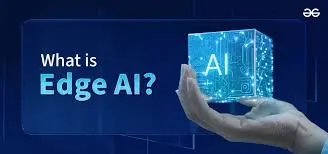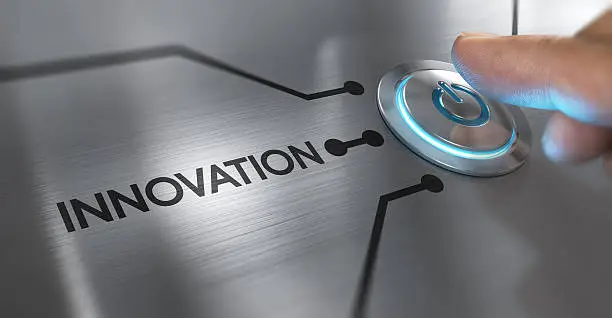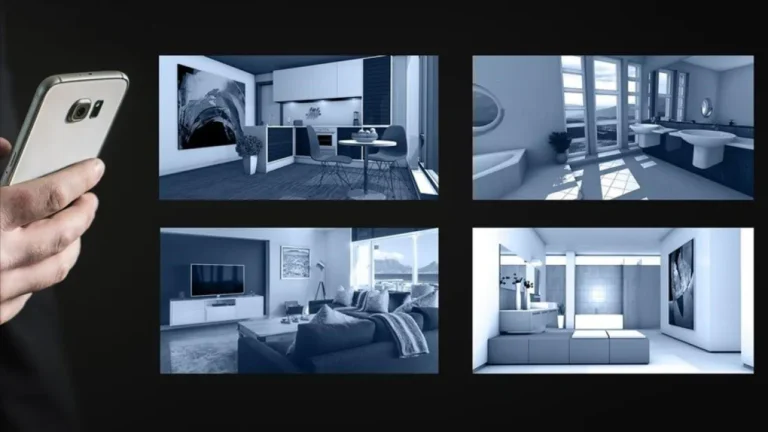Top Trends in New Battery Technology 2025
New Battery Technology Electricity is becoming the new fuel that moves our lives forward. From the car you’ll drive next to the solar energy you’ll store at home, batteries sit at the center of a fast-changing energy world. And New is a tipping point year. Breakthroughs that have been in labs for a decade—solid‑state, sodium‑ion, graphene‑enhanced, lithium‑sulfur, even extreme‑fast‑charging (XFC) chemistries—are finally stepping into pilot lines, early commercial launches, and real products you’ll be able to buy (or at least pre‑order) soon.
If you write about clean tech, shop for an electric vehicle, install rooftop solar, or simply want longer‑lasting phone batteries, understanding new battery technology 2025 will help you make smarter choices. This long‑form, human‑friendly guide breaks everything down in plain language—no PhD required. We’ll cover what’s new, what’s hype, who’s building what, where costs are headed, how recycling fits in, and what to expect between now and 2030.
Quick Takeaways (Skimmable)
2025 is the bridge year between lab breakthroughs and early commercial scaling for several next‑gen chemistries. Expect limited launch volumes before mass adoption later in the decade.
Solid‑state batteries promise higher energy density and better safety; auto pilots/demos are underway, with wider EV rollout later (mid‑to‑late decade depending on brand).
Sodium‑ion batteries are going commercial sooner than many expected—attractive for low‑cost EVs, two‑/three‑wheelers, and stationary storage where cost beats range.
Extreme‑fast charging tech (sub‑10‑ to ~15‑minute charge windows to high state of charge) is moving from demo to production partnerships.
Recycling & circularity are shifting from “nice idea” to regulatory requirement and cost lever—design for disassembly matters.
Falling $ / kWh battery costs + multi‑chemistry pack designs = cheaper EV variants and better grid storage economics.
Bottom line: Battery innovation is no longer just chemistry—it’s full‑stack: materials, design, manufacturing, software, supply chain, and second‑life reuse.
Why New Battery Technology Innovation Matters Right Now
We’re electrifying transport, digitizing industry, and decarbonizing power—all at once. That means more demand for safe, affordable, scalable energy storage. Traditional lithium‑ion (Li‑ion) cells enabled smartphones and the first generation of EVs, but we’re running into practical limits: cost pressures, raw material constraints, safety, charge time, cold‑weather performance, and recyclability.
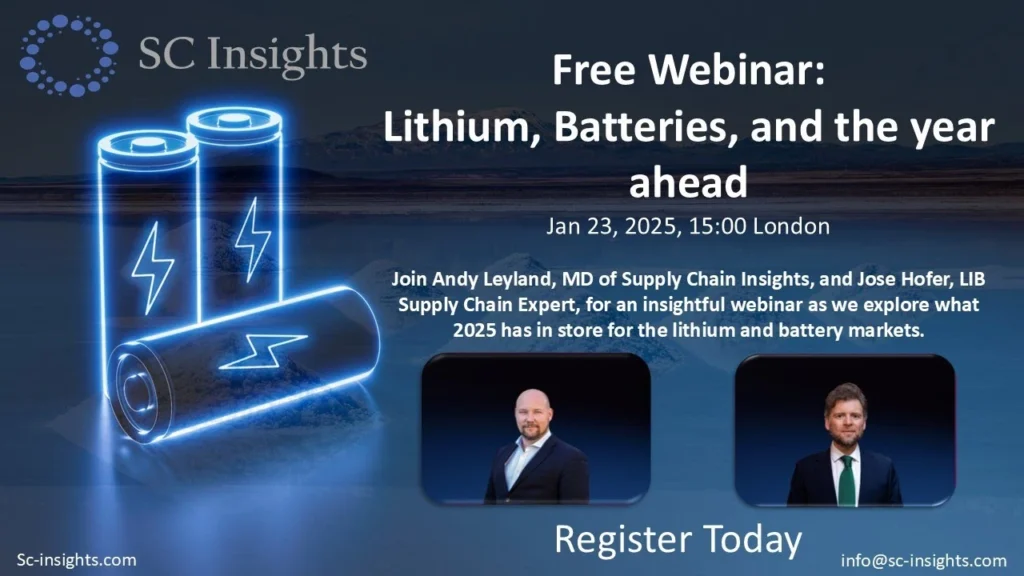
New battery technology in 2025 is about solving those real‑world pain points, not just chasing lab records. Automakers want faster charging to reduce range anxiety. Grid developers need lower‑cost, long‑life storage to soak up solar and wind. Consumers want phones that last longer and charge in minutes. Regulators want greener supply chains. Investors want to know which tech scales.
From Lead‑Acid to Lithium & Beyond: A 60‑Second History
Lead‑acid (1859–today): Cheap, heavy, reliable starter batteries & backup power.
Nickel chemistries (NiCd, NiMH): Rechargeable consumer electronics workhorses in the 20th century.
Lithium‑ion (commercialized 1990s): High energy density + light weight = portable electronics boom, then EV revolution.
Lithium iron phosphate (LFP) & nickel‑rich NCM/NCA variants: Tuned chemistries for cost, range, or power.
Next‑gen era (mid‑2020s+): Solid electrolytes, alternative ions (Na, Mg), sulfur cathodes, silicon/graphene anodes, and hybrid pack architectures.
We’re now in Stage 5—the “platform decade,” where no single chemistry wins everything. Instead, the market fragments by use case.
Technology Landscape 2025
Below is a high‑level snapshot of the leading new battery technology in 2025 and why they matter.
Solid‑State Batteries (SSB)
What: Replace flammable liquid electrolyte with a solid (ceramic, sulfide, polymer, composite).
Why care: Higher New Battery Technology density (more range), improved safety, potential ultra‑fast charging, tighter packaging.
Status 2025: Automotive‑sized cells validated by multiple OEM/startup teams; demonstration vehicles planned mid‑decade; cost + manufacturability still hurdles.
Sodium‑Ion Batteries (Na‑ion)
What: Sodium instead of lithium; similar cell architecture but different materials.
Why care: Abundant, low‑cost raw materials; good low‑temp performance; safer profile.
Status 2025: Early commercial packs announced; strongest traction in stationary storage & value EV segments; energy density lower than premium Li‑ion but improving.
Graphene / Silicon‑Enhanced Lithium Systems
What: Use graphene composites or silicon‑dominant anodes to boost conductivity & capacity.
Why care: Faster charging, higher power, better heat spreading, potential longer cycle life.
Status 2025: Entering specialty cells (fast‑charge EV, power tools, premium electronics); scaling via partnerships with established manufacturers.
Lithium‑Sulfur (Li‑S)
What: Sulfur cathode + lithium metal anode.
Why care: Theoretical energy density far above Li‑ion; lightweight; sulfur abundant/cheap.
Status 2025: Research breakthroughs attacking cycle life & “shuttle effect”; early prototypes for aviation, drones, and high‑end mobility concepts.
LMFP / LFP 2.0 & High‑Manganese Hybrids
What: Lithium manganese iron phosphate chemistries that lift energy density beyond standard LFP while keeping cost & safety benefits.
Status 2025: Pack‑level range gains claimed; entering affordable long‑range EV strategies.
Metal‑Air (Aluminum‑Air, Zinc‑Air, Lithium‑Air)
What: Metal anode reacts with oxygen; high theoretical energy but practical regen/recharge challenges.
Status 2025: Mostly niche / range‑extender / research; watch for hybridization in specialty markets.
Deep Dives Into 2025’s Breakthrough Chemistries
1. Solid‑State Batteries: Closer Than Ever (But Still Not “Everywhere”)
Solid‑state batteries (SSB) have been called the “holy grail” for years. The pitch: swap the flammable liquid electrolyte in today’s Li‑ion packs for a solid material that can tolerate lithium‑metal anodes, unlock higher energy density, and improve safety. Sounds perfect—so why aren’t they standard yet?
What Makes SSB Different?
Solid electrolyte: Ceramic (oxide), sulfide glass, or polymer.
Thinner separators: Tighter stacking = more active material per volume.
Lithium‑metal compatibility: Higher specific energy than graphite anodes.
2025 Reality Check
The industry shifted from pure research to engineering for mass production. Big themes this year:
Scalability: Moving from coin cells to automotive‑scale multi‑Ah pouch/prismatic cells.
Interface management: Preventing dendrites, cracking, interfacial resistance.
Manufacturing tooling: New coating,New Battery Technology, stacking, sintering equipment required; capex heavy.
Thermal control & mechanical pressure management inside modules.
Leading Development Tracks (Snapshots)
Toyota + Idemitsu (sulfide electrolyte supply chain) – Industrial precursor build‑out underway; commercialization targeted late‑decade (company guidance), with limited volumes earlier for testing.
Stellantis + Factorial Energy (FEST® cells) – Automotive‑sized cells validated at 375 Wh/kg; 15→90% charge in ~18 minutes reported in testing; demo fleet planned 2026; scaling roadmap in progress.
QuantumScape – Advancing ceramic separator processing (“Cobra” manufacturing step) to improve throughput; targeting gigawatt‑scale readiness later in decade.
Blue Solutions (Bolloré Group) – Polymer‑based solid‑state systems in niche mobility & bus fleets since early 2010s; now collaborating with Putailai to accelerate next‑gen (Gen4) SSB manufacturing and materials.
Samsung SDI, Hyundai, Solid Power, ProLogium – Pilot lines, pre‑production sampling, and OEM collaborations continue across Asia, Europe, and North America.
New Battery Technology When Will You Drive One?
Expect progressive rollout. Early fleets (demo, premium trims, dedicated low‑volume models) mid‑to‑late 2020s; broader penetration depends on cost curve + manufacturability learning + supply chain readiness. Many automakers will blend advanced liquid‑electrolyte lithium chemistries with SSB pilot deployments before full conversion.
Key takeaway: Solid‑state is coming, but you’ll see it first in premium or specialized applications—then gradually trickling down.
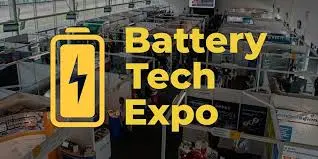
2. Sodium‑Ion & Multi‑Chemistry Packs: Cost Wins Markets
Lithium supply is global but concentrated; price volatility has been a recurring headache. Enter sodium‑ion—an alternative that leans on far more abundant raw materials. Energy density is lower than nickel‑rich lithium cells, but similar to (and catching up with) LFP. For short‑range EVs, micro‑mobility, and stationary energy storage, sodium’s economics shine.
Why Sodium?
- Sodium resources widely distributed; reduces strategic risk.
- Lower raw material cost potential.
- Good low‑temperature performance.
- Compatible with large‑format prismatic cells.
2025 Milestones
CATL “Naxtra” sodium‑ion brand announced with mass production timeline; New Battery Technology early energy density figures in the ~170+ Wh/kg class, targeting parity with LFP use cases.
Second‑generation Shenxing superfast‑charging lithium battery (same event) shows that multi‑chemistry EV architectures—pairing different cell types for range, cost, fast charge, or cold‑weather function—are moving from concept to product strategy.
Dual‑power / hybrid packs: Expect some OEMs to combine high‑power fast‑charge cells with high‑energy cells in a single vehicle platform.
Where Sodium Makes Sense
Entry‑level EVs (urban range, fleet cars).
Two‑wheel / three‑wheel electric mobility in emerging markets.
Home & commercial solar storage where cost beats footprint.
Grid‑scale batteries replacing lead‑acid in backup & telecom towers.
Watch this space: Multi‑chemistry systems that allocate “cheap but bulky” sodium cells + “premium fast charge” lithium cells may become common.
3. Graphene & Silicon‑Enhanced Lithium Cells: Speed + Power
New Battery Technology Graphene, silicon anodes, and advanced nano‑composites are helping close the gap between today’s lithium batteries and the ultra‑fast charging expectations of tomorrow’s drivers.
What’s Changing?
Traditional graphite anodes limit how quickly a battery can accept charge before plating and heat buildup. New Battery Technology by blending silicon‑dominant materials, conductive graphene scaffolds, or proprietary nano‑coatings, companies are pushing:
Extremely high charge rates (minutes, not hours).
Improved thermal pathways to pull heat out fast.
Higher usable capacity in the same form factor.
Cycle‑life retention under repeated fast‑charge abuse.
Commercial Signals in 2025
New Battery Technology Extreme‑Fast Charging (XFC) EV batteries marketed as “charge in minutes” solutions; partnerships forming to bring tech into large‑scale cell manufacturing.
Silicon‑anode cylindrical cells (e.g., 21700 formats) shipping to OEMs in light electric vehicles; energy density >300 Wh/kg in announced products.
Graphene thermal & conductive films increasingly used in smartphones and foldable displays to manage heat from high‑power charging.
Use Cases
Premium EV trims with road‑trip fast charging positioning.
Performance e‑bikes / light EVs where weight + charge convenience drive user adoption.
High‑drain industrial robotics / drones needing rapid turnaround.
4. New Battery Technology Lithium‑Sulfur: The High‑Energy Wildcard
Imagine an electric aircraft, long‑range drone, or ultra‑light expedition vehicle powered by a battery far lighter than today’s packs. That’s the promise of New Battery Technology lithium‑sulfur (Li‑S)—a chemistry with a theoretical energy density that dwarfs conventional lithium‑ion. Sulfur is plentiful and cheap. So why isn’t Li‑S everywhere? Cycle life and the notorious polysulfide shuttle problem.
2025 Progress Points
Research teams are reporting hundreds of cycles with stabilized cathode architectures (porous hosts, conductive scaffolds, catalyst additives).
Approaches include metal‑oxide / carbon composite hosts, nanoparticle additives to guide lithium deposition, and electrolyte tuning to suppress shuttling.
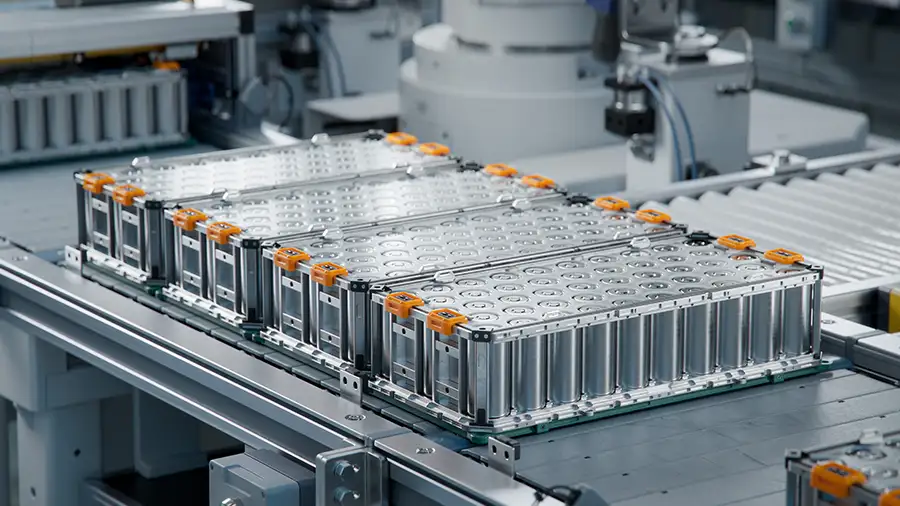
1Ah+ pouch prototypes demonstrate scaling beyond lab coin cells.
Universities and startup labs are pitching Li‑S for urban air mobility (UAM) and next‑gen EV range extension scenarios where weight is critical.
Still early: Expect Li‑S to appear first in aerospace, defense, specialty drones—long before mainstream passenger EVs.
5. LMFP / LFP 2.0: The Value Workhorse Evolves
New Battery Technology Lithium iron phosphate (LFP) rewrote the affordability + safety script for EVs. Now manganese‑doped variants (LMFP) seek to lift energy density while keeping the cost & stability benefits that made LFP so popular—especially in China.
Why It Matters in 2025
Global automakers under cost pressure are expanding LFP and LMFP usage into mid‑range vehicles.
Pack architecture improvements (cell‑to‑pack, structural packs) squeeze more kWh per footprint.
Some suppliers claim ~1,000 km pack range under ideal test cycles using LMFP long‑range packs (marketing claims; real‑world mileage varies).
LMFP chemistries reduce nickel & cobalt dependency.
Economics & Performance
6. Battery Cost Curves: Where $/kWh Is Heading
New Battery Technology pack cost remains the biggest lever for EV sticker price and stationary storage economics. The last two years saw rapid declines driven by raw material deflation, overcapacity, and LFP adoption.
Current Directional Signals (2024 → 2025)
Global pack prices fell sharply in 2024 (largest drop since 2017 in some trackers).
LFP cells averaged well below nickel‑rich chemistries; in some markets, sub‑$60/kWh cell pricing reported for high‑volume contracts.
Pack‑level averages across applications remain higher (integration, management, housing).
Analysts expect continued downward pressure where manufacturing overcapacity exists—especially in China—though regional policies (tariffs, content rules) may create price spreads.
What Drives Cost Down?
Scale (GWh + automation).
Chemistry shifts (LFP / sodium‑ion / LMFP).
Manufacturing process innovations (dry electrode coating, higher line speeds, yield analytics).
Material recycling & local sourcing cutting logistics + virgin input costs.
What Could Push Cost Up?
Trade restrictions & tariffs.
Local content sourcing mandates raising early capex.
Upfront premium for next‑gen chemistries until volume builds.
Actionable SEO Angle: Include cost trend charts in future update posts—high search demand topic.
7. Performance Metrics That Matter
When comparing new battery technology 2025 products, look beyond marketing hype. Use this quick metric guide:
Metric
- Energy Density (Wh/kg, Wh/L)
- Charge Rate (C‑rate / time to %)
- Cycle Life (# cycles to % capacity)
- Operating Temp Range
- Safety / Thermal Runaway
- Recyclability / Chemistry Value
What It Means
- Energy per weight/volume
- How fast it charges safely
- Durability
- Cold/heat tolerance
- Fire/vent risk
- Material recovery value
Why It Matters
- Driving range, flight endurance, portability
- Convenience, fleet uptime
- TCO, warranty risk
- Grid, commercial fleets, climates
- Insurance, regulation
- Residual asset value
What To Watch
- SSB & Li‑S promise step‑ups; LMFP improves value tiers
- XFC claims: verify real‑world 10–80% times
- High fast‑charge stress often cuts cycle life
- Sodium‑ion & some SSB electrolytes shine in cold
- Solid electrolytes; LFP/LMFP safer than NCM
- High nickel/cobalt retains scrap value; sodium lowers but less toxic
Fast Charging Revolution
8. Charging in Minutes: Tech, Tradeoffs & Infrastructure
Consumer surveys show charge time anxiety rivals range anxiety. Next‑gen chemistries + pack design + thermal + software orchestration aim to deliver 10–20 minute high‑state‑of‑charge sessions—or even faster bursts for fleet duty cycles.
Technology Paths to Faster Charging
Silicon‑dominant anodes that accept higher lithium flux without plating.
Engineered nano‑coatings / dopants to stabilize SEI (solid electrolyte interphase).
Advanced liquid or semi‑solid electrolytes with higher ionic conductivity.
Robust thermal paths (graphene, liquid immersion, phase‑change pads).
Battery management algorithms that pre‑condition cells for supercharging.
2025 Innovation Snapshots
Super‑fast lithium packs advertised to add hundreds of km in a few minutes under high‑power DC charging.
Extreme‑Fast Charging (XFC) EV cells entering joint manufacturing alliances; durability claims include thousands of XFC cycles.
Automotive‑validated solid‑state cells demonstrating sub‑20‑minute high‑state charging in lab/partner testing.
Cold‑weather charging advances show 0→80% times under freezing conditions improving via electrolyte + pre‑heat strategies.
The Infrastructure Catch
A 5‑minute, 300‑kW charge session isn’t useful if the grid can’t deliver. Expect:
High‑power urban / highway corridor hubs.
On‑site battery buffering (ironically, high‑capacity stationary packs to fast‑charge vehicles).
Dynamic load management + renewables + AI forecasting.
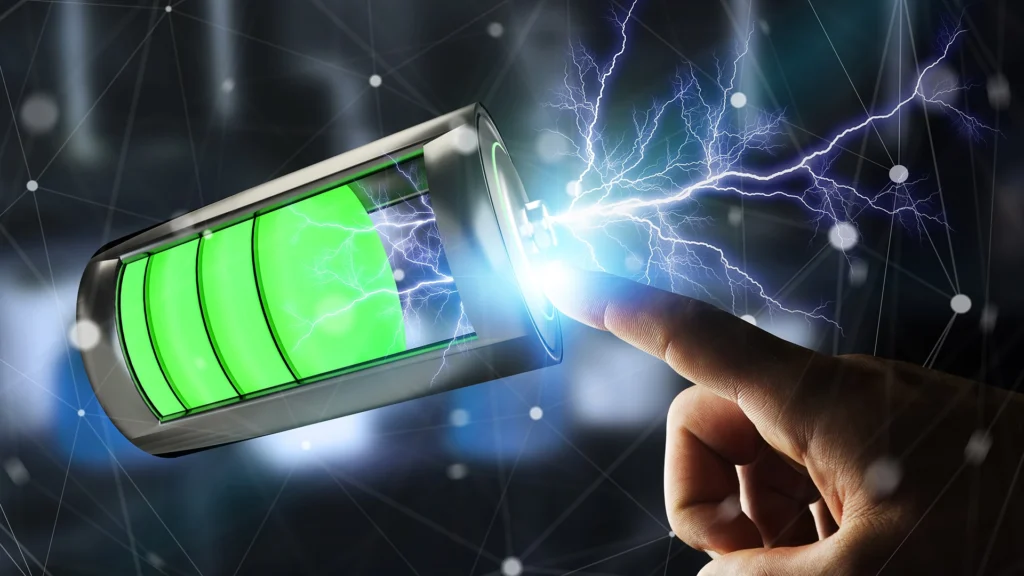
New Battery Technology Circularity, Sustainability & Regulation
9. Recycling Moves Center Stage
New Battery Technology won’t be sustainable if we keep landfilling the old ones. The economics are improving fast: recovered nickel, cobalt, copper, lithium salts, and graphite can re‑enter the supply chain, cutting both cost and environmental impact.
2025 Highlights
High‑recovery hydromet & pyromet processes now claim 90–95%+ material recovery for key metals from spent Li‑ion batteries.
Consumer & OEM take‑back programs expanding; ship‑back kits common in North America.
Second‑life energy storage systems built from repurposed EV packs bridge the gap between use and full recycling—especially for data centers, microgrids, and commercial backup.
New Battery Technology Global Policy Pressure
New EU Battery Regulation timelines mandate recycled content targets, traceability, and performance labeling.
Recycling efficiency calculation rules taking effect mid‑2025 in Europe raise compliance stakes for importers & OEMs.
Government grants & industrial programs (UK, U.S., others) funding local recovery of critical minerals from end‑of‑life packs.
Takeaway: If you’re comparing New Battery Technology suppliers, ask about recycled content, take‑back logistics, and recovery rates—increasingly a selling point and a compliance requirement.
New Battery Technology Supply Chain, Manufacturing & Scale
10. Gigafactories, Overcapacity & Localization
New Battery Technology manufacturing scale is exploding. Announced global cell capacity heading toward multi‑terawatt‑hours by the end of 2025 dramatically exceeds near‑term demand under many scenarios. That sounds like bad news—but overcapacity can drive price competition and accelerate tech transitions.
2025 Manufacturing Themes
Regionalization: U.S. (IRA incentives), EU (local content rules), India & Middle East (energy transition megaprojects) all courting gigafactories.
China still leads volume, cost efficiency, and supply chain integration—but faces tariff & export control friction.
Dry electrode, advanced coating, and high‑speed stacking lines reduce cost & energy use.
Flexible lines that can run multiple chemistries (LFP / LMFP / Na‑ion / NCM) de‑risk capital.
Signals to Watch
Delays or slow ramps at some North American plants tied to shifting EV demand forecasts.
Announcements of mixed‑chemistry production capability.
Partnerships between material suppliers, equipment firms, and cell makers to accelerate solid‑state transition.
Sector Playbooks: Where Each New Battery Technology Fits
11. Electric Vehicles (Passenger & Fleet)
Premium long‑range: Nickel‑rich Li‑ion now; migrating toward SSB & silicon‑boosted fast‑charge chemistries late decade.
Mass‑market / cost‑sensitive: LFP & LMFP dominate; sodium‑ion begins in budget/urban segments.
Commercial fleets / delivery vans: Cycle life + charge uptime = chemistries optimized for fast‑turn logistics hubs.
Performance / sport: Silicon‑enhanced, high‑discharge packs; early SSB showpieces.
12. Grid‑Scale & Commercial Energy Storage
Stationary storage cares about $/kWh, cycle life & safety more than weight. Sodium‑ion, LFP, and repurposed EV packs compete.
Data centers & AI compute hubs driving demand for modular, fast‑deploy second‑life systems.
Policy incentives reward local content + recycling.
13. Residential Solar + Backup
Home New Battery Technology systems increasingly modular; hybrid inverter + battery packages trending.
Value shoppers will see more LFP / sodium‑ion options; premium stacks may offer longer warranties.
14. Aviation, Drones & Urban Air Mobility (UAM)
Weight is king: Li‑S, high‑silicon, and eventually SSB candidates.
Certification hurdles high; expect phased adoption via cargo drones first.
15. Consumer Electronics & Wearables
Fast‑charge phones & laptops adopt graphene thermal films + silicon‑boosted cells.
Foldables & AR/VR devices need flexible pack designs; safety & cycle count prioritized.
New Battery Technology Regional Landscape 2025
China: Scale Engine & Chemistry Lab
China leads in cell production volume, LFP/LMFP innovation, and now front‑running sodium‑ion commercialization. Domestic demand + aggressive export strategy keep costs low, though trade frictions are rising.
United States: Incentives & Recycling Loop
Inflation Reduction Act credits & state incentives drive domestic manufacturing, while startups push recycling, second‑life storage, and extreme‑fast‑charging tech. Auto OEMs balance import cells with in‑region joint ventures.
Europe: Regulation‑Driven Innovation
New Battery Technology \EU Battery Regulation forces sustainability reporting, recycled content, and removability guidelines. European automakers hedge with multi‑chemistry sourcing (LFP import + local premium cells + sodium pilots). Recycling build‑out accelerating across the bloc and UK.
Emerging Markets: Leapfrogging with Sodium & LFP
Markets in South Asia, Middle East, and Africa often favor lower‑cost chemistries and rugged stationary storage solutions. Utility tenders increasingly specify non‑flammable or easily recyclable systems.
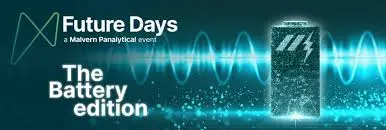
Strategic Partnerships & Industry Moves to Watch
The New Battery Technology revolution is too capital‑intensive for solo players. 2025 is the year of strategic partnerships that blend materials science, manufacturing, and downstream demand.
Snapshot Dealboard
Auto OEM + Solid‑State Startup: Automakers validating large‑format cells (e.g., Factorial with Stellantis) to de‑risk next‑gen supply.
Energy Major + Electrolyte Supplier: Securing sulfide precursor supply for future SSB (example: Idemitsu alignment with Toyota solid‑state roadmap).
Battery Startup + Established Cell Maker: Licensing extreme‑fast‑charging or silicon‑dominant chemistries into high‑volume factories.
Recycling Specialist + Automaker / Data Center: Repurpose EV packs into stationary storage (GM + recycling partners; Redwood Energy deployments).
Materials & Equipment Providers + Legacy SSB Producer: Accelerate Gen4 polymer/metal hybrid SSB scaling (Putailai + Blue Solutions).
Why partnerships matter: Getting from lab cell to millions of safe, warrantied packs requires upstream materials, precision equipment, quality analytics, finance, and an end‑market anchor customer.
Roadmap: 2025 → 2035 (What to Expect & When)
Below is a directional (not guaranteed) timeline showing when you’re likely to see various new battery technology in products. Use it as planning guidance, not a promise.
2025–2026
Sodium‑ion packs in low‑cost EVs, stationary storage pilots.
Extreme‑fast‑charging demo EV fleets; early commercial cells in premium / fleet niches.
Automotive‑scale solid‑state cells validated with OEM demo programs.
Recycling scale‑up; regulatory reporting begins (EU).
LMFP long‑range value EV trims.
2027–2028
Initial limited‑run solid‑state EVs from early adopters (regional).
Wider sodium‑ion grid deployments; telecom / microgrid adoption in developing regions.
High‑volume silicon‑enhanced fast‑charge cells in mid‑market EVs.
More stringent global end‑of‑life recovery compliance.
2029–2030
Broader SSB penetration in premium / high‑volume segments if cost curve bends.
Li‑S appears in specialized aviation products; early commercial drones.
Circular battery supply chains mature; recycled content % becomes buying criterion.
2030+
Chemistry convergence: multi‑chemistry modular packs common.
Organic / novel solid electrolytes in high‑volume manufacturing? Watch research.
Second‑life management marketplaces standard across fleets.
Practical Buying & Evaluation Guide
Use this checklist when evaluating products marketed with new battery technology 2025 claims:
Ask These Questions
What chemistry is actually inside? Marketing labels can hide LFP, LMFP, or NCM cores.
What is the warrantied cycle life at the advertised charge rate? Fast charge specs often exclude warranty.
Certified operating temperature range? Matters for fleets & outdoor storage.
Fire suppression / safety certifications? UL, IEC, CE, or regional equivalents.
Recycling / take‑back program included? Ask for documentation.
Software + BMS updates? Smart packs require firmware maintenance.
Red Flags
Claims of “infinite cycles” without data.
“Solid‑state” printed on marketing sheet but tech still uses gel or semi‑solid slurry.
No regulatory compliance markers for your region.
Impossible charge claims (0–100% in 2 minutes) with no thermal management details.
FAQs
1. What are the biggest New Battery Technology breakthroughs to watch in 2025?
Solid‑state validation, sodium‑ion commercialization, extreme‑fast‑charging silicon/graphene cells, improved LMFP packs, and advances in high‑recovery recycling.
2. Will solid‑state batteries be in mainstream EVs in 2025?
Unlikely at large scale. 2025 is about validation, supply agreements, and limited demo fleets. Wider adoption expected later in the decade.
3. New Battery Technology Are sodium‑ion batteries good enough for cars?
For short‑range, budget, fleet, or city EVs—yes, especially where cost and cold‑weather performance matter more than maximum range. For long‑range highway driving, higher‑energy chemistries still lead.
4. Do sodium‑ion batteries charge faster than lithium‑ion?
Some implementations show strong charge acceptance, but real‑world performance depends on cell design. Hybrid packs may combine sodium for cost + lithium for power.
5. How fast is “extreme‑fast charging” really?
Industry demos target 10–15 minute sessions to high state of charge (often 10→80%); some showcase even shorter “range boost” bursts under controlled conditions.
6. Are ultra‑fast charges bad for New Battery Technology life?
They can be—unless chemistry, cooling, and BMS are engineered for it. Look for validated cycle life under fast‑charge testing, not just standard cycling.
7. What’s special about silicon‑anode New Battery Technology?
Silicon stores more lithium than graphite, enabling higher capacity and faster charging, but it swells on cycling. Advanced binders and nano‑engineering manage expansion.
8. Is graphene really in commercial New Battery Technology yet?
Graphene is used today in conductive additives, thermal films, and some enhanced electrodes—though often in small quantities. Expect incremental, not magical, gains.
9. Why are lithium‑sulfur New Battery Technology taking so long?
The polysulfide “shuttle” dissolves active material and shortens cycle life. New host structures and protective layers are extending cycles, but mass production remains a challenge.
10. Can lithium‑sulfur power electric airplanes?
In principle yes—its high specific energy is attractive—but certification, cycle life, and manufacturing must mature. Early use cases: drones, prototype aviation platforms.
11. Which EV battery is safest?
Chemistry is one factor; pack design matters too. LFP and some solid‑state architectures have strong safety reputations. Always check test certifications.
12. How low can EV battery prices go?
Analysts see downward pressure as manufacturing scales and lower‑cost chemistries spread. Sub‑$100/kWh pack averages are plausible mid‑decade in high‑volume markets, though regional policies can raise local pricing.
13. What is LMFP and how is it different from LFP?
LMFP adds manganese to lithium iron phosphate to boost voltage and energy density while keeping much of LFP’s cost and safety benefit.
14. Are second‑life EV batteries reliable for home or business backup?
Yes—if properly tested, re‑binned, and integrated with a compatible BMS. Many commercial projects now use repurposed packs for stationary storage.
15. How are old EV batteries recycled?
Cells are discharged, disassembled, shredded, and processed (pyromet/hydromet) to recover metals like nickel, cobalt, lithium, copper, and graphite for new batteries.
16. What % of a lithium New Battery Technology can be recovered?
Advanced recyclers report recovery rates above 90% for key materials under optimized processes; exact numbers vary by chemistry and plant.
17. Are there laws requiring recycled content in new New Battery Technology?
Yes—especially in the European Union, where phased targets and reporting requirements are rolling out under the new New Battery Technology Regulation.
18. Do fast‑charging New Battery Technology need special chargers?
Usually yes. They require high‑power DC fast chargers and communication protocols so the BMS can manage current, voltage, and heat safely.
19. How does temperature affect charging speed?
Cold slows ion movement; cells must be heated to accept high charge rates. Some new chemistries and pack preconditioning strategies improve cold‑weather fast charging.
20. Which companies lead New Battery Technology recycling in 2025?
A growing roster: large integrated recyclers, OEM‑partner programs, and startup–automaker alliances—especially in North America, Europe, and Asia.


